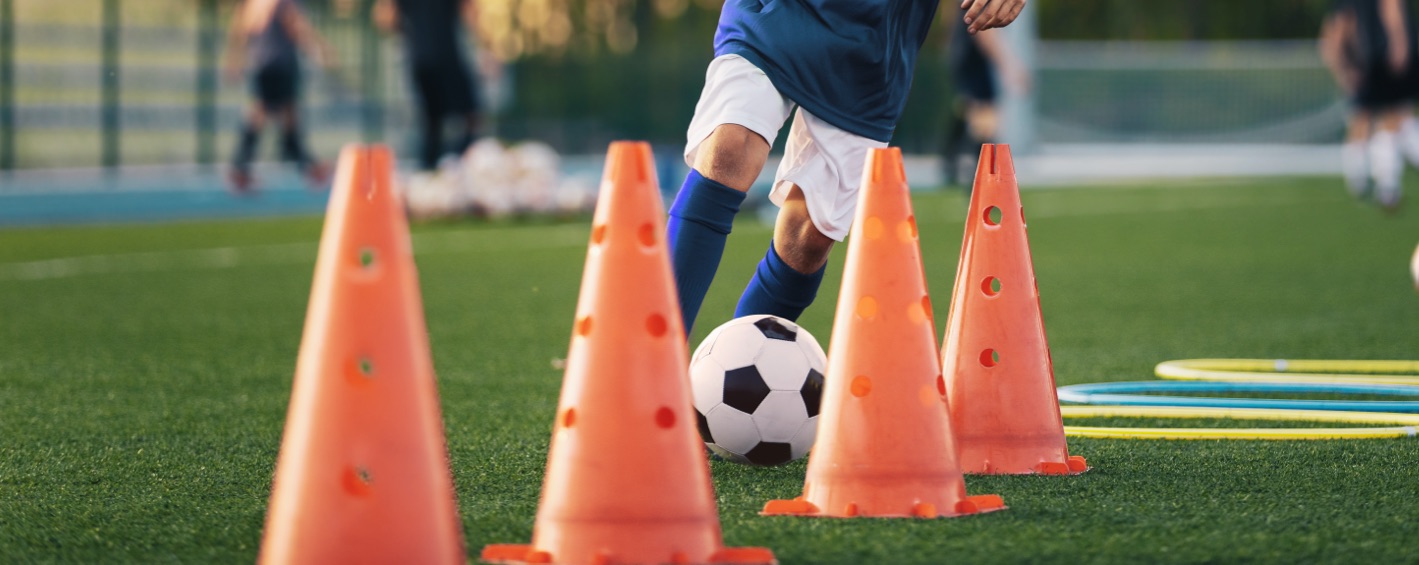Share it
Player focus: for individual players to practice on their own they need to know what it is coaches are looking for when they see them using techniques and skills. The focus here is dribbling.

Practicing dribbling technique is essential for any youth player looking to improve their skills on the field. Here are some steps and tips to help an individual practice dribbling effectively:
-
Master the Basics:
- Ensure you have a good understanding of basic dribbling techniques, such as using the inside and outside of your foot, as well as the sole of your foot.
- Develop control over the ball by practicing simple touches and dribbles first.
-
Warm-Up:
- Always start with a proper warm-up to prepare your muscles and joints for practice. This can include light jogging, stretching, and dynamic movements.
-
Practice with Both Feet:
- Work on dribbling with both your dominant and non-dominant foot. This will make you a more versatile player and harder to defend against.
-
Cone Drills:
- Set up a series of cones or markers in a straight line or zigzag pattern. Dribble through them while maintaining close control of the ball.
- Vary the distance between cones and the speed at which you dribble to challenge yourself.
-
1v1 Scenarios:
- Have a teammate or friend play as a defender. Take turns trying to dribble past each other. This will improve your ability to maneuver the ball around opponents.
-
Change of Direction:
- Practice sudden changes of direction while dribbling. Use quick cuts, feints, and body movements to deceive defenders.
- Incorporate 180-degree turns and step-overs to add variety to your dribbling repertoire.
-
Use Your Body:
- Shield the ball with your body to protect it from defenders. Learn to use your hips and shoulders to create space and maintain possession.
-
Speed and Control:
- Work on dribbling at different speeds. Sometimes, you need to dribble slowly to maintain control, while other situations may require quick bursts of speed.
-
Visualization:
- Mentally visualize situations in which you need to dribble past opponents or make a play. Visualization can help improve decision-making on the field.
-
Keep Your Head Up:
- Practice dribbling while keeping your head up to scan the field and be aware of your surroundings. This will help you make better decisions during a game.
-
Game-Like Scenarios:
- Set up small-sided games or drills that simulate real match situations. This will help you apply your dribbling skills in a game context.
-
Consistency and Patience:
- Dribbling takes time to master. Be patient with yourself and practice regularly. Consistent practice will lead to improvement over time.
-
Receive Feedback:
- Seek feedback from coaches, experienced players, or even record yourself to analyze your dribbling technique. Identify areas for improvement and work on them.
-
Match Practice:
- Finally, practice dribbling during actual matches. This is where you can test your skills under pressure and learn how to make effective decisions in real game situations.
Remember that dribbling is not just about fancy moves; it's about maintaining control of the ball while making the right decisions on the field. Focus on developing both your technical skills and your soccer IQ to become a well-rounded player.